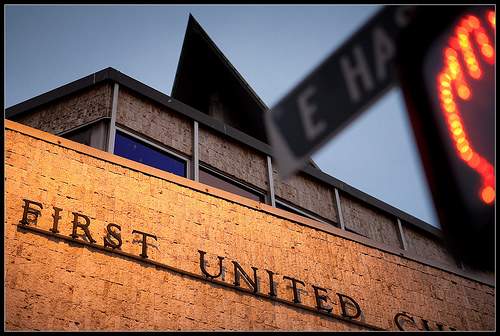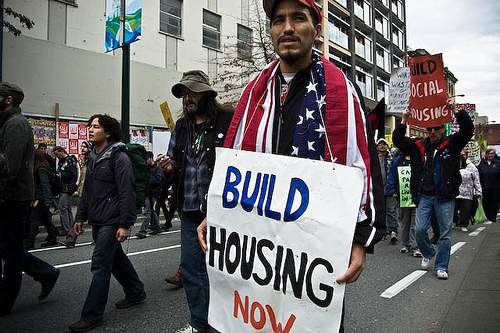It is a well-known fact that Vancouver has one of the best qualities of life for a city in the world. According to the 2010 Mercer Quality of Life survey it is currently joint fourth place, along with Auckland and behind Vienna, Zurich and Geneva.
This becomes clear when visiting the city; the flashy high-rise buildings in the business district, the vast greenery in Stanley Park located right next door downtown, and the picturesque residential areas of North Vancouver all contribute to it’s image of wealth. Whenever I mentioned to friends or family that I was planning to head there for a couple of months in the winter of 2010/2011, a comment I frequently encountered was that Vancouver is supposed to be an incredible place to live.
There are ten categories which a city has to have high standards in to be considered as part of the list for best quality of life. These categories encompass all the key factors one might look into when assessing a city’s liveability, and range from education, law enforcement and health, to recreation, natural environment and housing.
However, it is estimated that around 1,200 people a night sleep outside in Vancouver; this doesn’t include the homeless who stay in sheltered housing. Since 2008, the amount of homeless people has risen by 9%. There is one particular place they all congregate; a road called East Hastings on the east side of downtown.
When I first arrived in downtown Vancouver and asked the staff at the front desk of my hostel where to go for a stroll, certain areas of Gas Town were described as places to avoid. Several other visitors staying in the hostel said they’d made it half way through this district, took a wrong turn, didn’t like what they saw and immediately changed direction.
That turn they took was more often than not onto East Hastings. If there’s anywhere you can find the homeless of Vancouver, it’s this street. Crowds of people flock together, carrying their only possessions in shopping carts of bags. The hostility people usual feel towards homeless people is magnified by the density of their groups in this particular district. Several of the people I met who live in Vancouver said they purposely avoid it, others said they have braved a walk down this street and seen pregnant women lying on the pavement injecting heroin.
However, anyone who has visited East Hastings enough will know that the people down there are harmless. If you don’t bother them they won’t bother you, and most of them will only recognise your existence if they’re asking for some spare change – similar to any other homeless person wherever you are.
When you visit, it becomes quite clear why these homeless people gather in this area of downtown, and the city of Vancouver has supplied several reasons for them to not budge. First of all, a homeless hotspot is outside United We Can Bottle Depot, which is an initiative started by Save Our Living Environment (SOLE),a non-profit organisation committed to improving existing urban conditions and providing simple ways for people to live. United We Can has provided jobs to those who struggle to find work, and supply them with foot or bicycle carts known as Urban Binning Units. These pick up recyclable materials from locations all over Vancouver and return them to the depot to be processed. They also accept containers collected from the streets and bins and give a small fee to the donators, a lot of which are homeless or people struggling with addiction and health problems.
Secondly, there are several churches littered across Gas Town which run endless sessions to feed, clothe and provide support for the homeless of the city. These include First United Church on East Hastings, and Franciscan Sisters on East Cordova. First United provide four meals a day, seven days a week, for the hungry and in need, and also provide 55% of sheltered bed space in the entire city (BC Housing statistic). The Franciscan Sisters run a Men’s clothing Centre four days a week for two hours in the morning, providing a shirt on the back of the homeless man, along with back-to-work outfits.
However, whilst it seems there are many ways in which Vancouver has tried to accommodate for their homeless population, there have been times where they have still felt uncared for. The winter of 2010 saw the arrival of the Winter Olympic Games, which cost the city $1.8 billion dollars to host. The homeless felt that the games were taking priority in government spending over their dire need for housing. This resulted in hundreds of squatters forming ‘Tent City’ on an seemingly abandoned piece of land in Downtown Eastside Vancouver (ironically it was owned by a housing developer). A sea of tents, banners, signs and fiercely protective protesters formed this little community, with a functioning kitchen area and a strict set of ‘no alcohol, no drugs and no fighting’ rules. Earlier this year, protesters attempted to set up a second tent city on the now empty land sitting in the Olympic Village. These protesters we swiftly moved on as the land is privately owned, and is in fact being turned into housing, from affordable units to more up-market condos.
Since their Olympic bid was placed in 2003, homelessness in Vancouver tripled, and their community felt that funding could be more usefully spent trying to prevent this evolving further. In a sense, the homeless had a point, trying to encourage the governing bodies to spend money on real and ongoing issues for a more long-term solution. However, when you consider that the entire revenue produced from the Olympics is estimated at around $2.5 billion, it seems it can only be onwards and upwards for the city as a whole.
It could be said that the existence of so many homeless people in one location in Vancouver could blemish the image left by its high position in the quality of life survey. There is, however, certainly an argument that it is because of the initiatives the city has been creating to accommodate and provide support for the homeless that its reputation remains strong. There are clearly some who disagree with me, as the more recent proposals for new tent cities show, and protesters still continue to fight. However, homelessness will perhaps never be solved, in any place in the world, but at least Vancouver has attempted to produce solutions to make sure each person has a chance to survive.
In the mean time, it can surely be said that if I was homeless, I could think of worse places to be than Vancouver. These people are so often looked down on and avoided; people feel threatened by the number of homeless gathering down East Hastings. But the truth remains that they have built a community in which they can at least be more accepted by relating to the crowd around them. Without shelter for the night and food, then next best thing is companionship.
Emma Higgins’ addiction to travel started with an inter-railing trip around fourteen countries in Europe in the summer of 2009. Her 2010 travels included a whistle-stop tour of Northwest India, a brief visit to Marrakech and two months in British Columbia, Canada. Her 2011 adventures consist of a trip to Barcelona, exploring more of her home, England, and a tour of Eastern Europe is planned for the autumn.
Her blog is based around her travels and the cultural comparisons she comes across, but whilst at home, she writes for all the other young and penniless travellers out there, and about the trials and tribulations of being stuck in ones mothercountry, itching to leave. You can catch up with Emma on her blog, Gotta Keep Movin’… (link to https://gottakeepmovin.

